Balancing Act: Ensuring Health and Harmony in Foal Weaning
Foal weaning is the process of gradually transitioning a young horse from its dependency on its mother’s milk to consuming solid food independently. This natural developmental stage is a crucial step in a foal’s life, marking the beginning of its journey toward independence. Typically, weaning occurs when the foal is between four to six months old, although the timing may vary depending on individual circumstances and management practices.
the Importance of a Balanced Approach
The weaning process is a delicate period in a foal’s life that necessitates a thoughtful and balanced approach. It involves not only the physical separation from the mare but also the introduction of a new diet and the cultivation of social interactions with other foals. Striking a balance between meeting the foal’s nutritional needs and addressing its psychological well-being is very important. A well-managed weaning process contributes significantly to the foal’s overall health, growth, and future well-being.
Challenges and Considerations
Weaning poses a series of challenges and considerations that demand careful attention from horse owners and caretakers. One of the primary challenges is the potential for stress and anxiety during the separation from the mare, which can manifest in behavioral and health issues. Additionally, there are nutritional considerations, as the foal transitions from a diet primarily based on mare’s milk to solid feeds. Social dynamics also come into play as foals learn to interact with their peers, establishing hierarchies within the group.
Navigating these challenges requires an understanding of the intricacies involved in the weaning process. Factors such as the timing of weaning, the chosen weaning technique, and the provision of a supportive environment all play pivotal roles in determining the success and smoothness of this critical developmental phase in a foal’s life. In this blog, we will delve into these challenges, offering insights and practical tips to ensure a harmonious and healthy weaning experience for both foals and their caretakers.
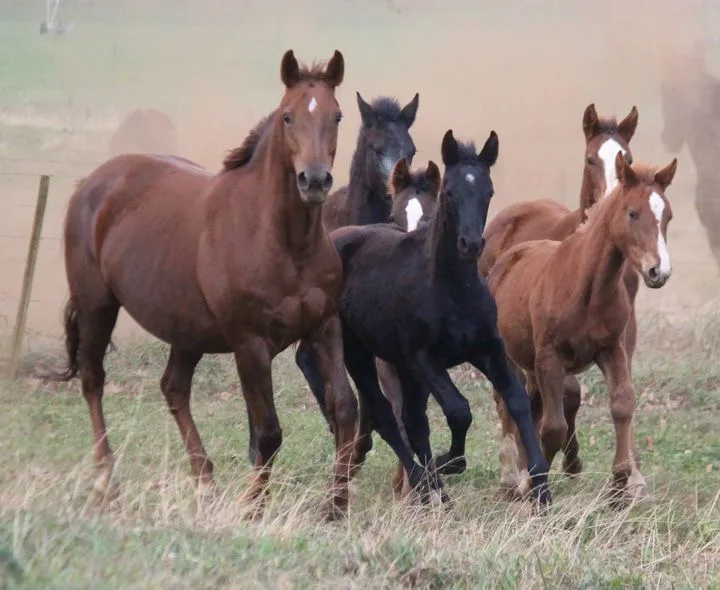
Understanding the Weaning Process
Natural Weaning in the Wild
In the wild, foals undergo a gradual and natural weaning process that is orchestrated by the mare and the dynamics of the herd. Typically, as a foal begins to nibble on grass and solid food, the mare gradually distances herself, encouraging the foal to become more independent. Natural weaning in the wild is a slow and gentle process, allowing the foal to adjust both physically and psychologically to a diet independent of its mother’s milk. The natural social structure of the herd also contributes to the foal’s development, as interactions with other members help shape its behavior and social skills.
Understanding this natural process provides valuable insights for domestic horse owners seeking to replicate a similar gradual transition for their foals. Mimicking the supportive elements of the natural environment can contribute to a smoother and less stressful weaning experience for both the foal and the mare.
Domestic Weaning Practices
In domestic settings, weaning practices often differ from the gradual process observed in the wild. Various techniques may be employed, ranging from abrupt separation to more gradual methods, depending on the preferences of the horse owner and specific circumstances. Abrupt weaning involves an immediate separation of the foal from the mare, while gradual weaning allows for a phased introduction of changes, such as separating the foal for short periods before complete separation.
The choice between abrupt and gradual weaning should take into account the individual needs of the foal, as well as the mare’s temperament and lactation status. Each method has its advantages and challenges, and horse owners must carefully evaluate which approach aligns best with their goals and the well-being of the animals involved.
Age-Appropriate Weaning Stages
The age at which a foal is weaned is a critical consideration. While weaning typically occurs between four to six months of age, it is essential to assess the foal’s physical development, nutritional requirements, and overall readiness for independent living. Some foals may be ready for weaning earlier, while others may benefit from a more extended period of nursing.
Understanding the age-appropriate weaning stages involves monitoring the foal’s behavior, growth, and consumption of solid food. This information guides horse owners in making informed decisions about the timing of weaning, ensuring that it aligns with the foal’s developmental milestones and readiness for a diet without maternal milk.
By delving into these aspects of the weaning process, horse owners can adopt a more informed and empathetic approach, fostering a positive and successful transition for foals as they embark on their journey toward independence.
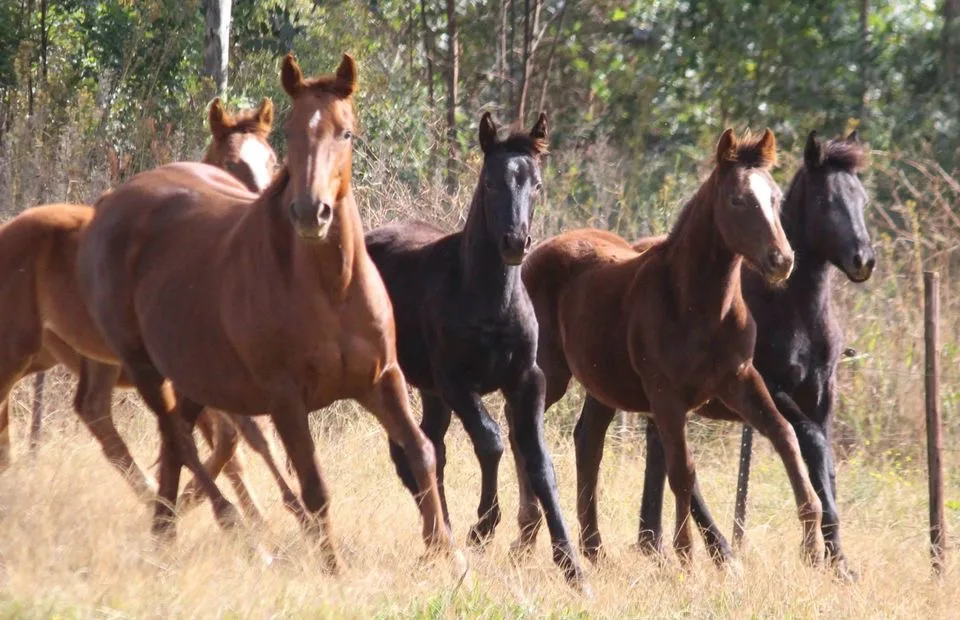
Health Implications
Physical Health Considerations
Nutritional Needs During Weaning
Ensuring proper nutrition is paramount during the weaning process. As foals transition from a diet primarily composed of mare’s milk to solid food, their nutritional requirements undergo a significant shift. It is crucial to provide a well-balanced diet that meets the foal’s growing needs for essential nutrients such as protein, vitamins, and minerals. Owners should introduce high-quality foal feeds specifically designed to support growth and development. Additionally, the gradual incorporation of forage, such as hay, aids in the digestive adaptation of the foal to a more fibrous diet.
Balancing the nutritional composition of the foal’s diet is essential for bone development, muscle growth, and overall health. Consulting with a veterinarian or equine nutritionist can help tailor a feeding plan that addresses the individual requirements of each foal, ensuring they receive the necessary nutrients for a smooth and healthy transition.
Monitoring Weight and Growth
Regular monitoring of a foal’s weight and growth is crucial to assess the success of the weaning process. Weight gain is an indicator of adequate nutritional intake and overall health. Owners should establish a growth chart, tracking the foal’s weight, height, and body condition score over time. Any deviations from expected growth patterns may signal potential health issues or nutritional deficiencies that require prompt attention.
A balanced diet, combined with routine health check-ups, allows owners to address any concerns early on, promoting optimal physical development and minimizing the risk of health complications during the weaning phase.
Psychological Health Considerations
Separation Anxiety
Foals often form strong bonds with their mothers, and the process of separation can lead to separation anxiety. This emotional stress may manifest through behavioral changes, such as vocalization, pacing, or a decrease in appetite. To mitigate separation anxiety, owners can implement gradual weaning techniques, allowing the foal to become accustomed to short periods of separation before the final separation. Providing companionship in the form of other foals or calm, older horses can also help ease the emotional transition.
Understanding the foal’s need for companionship and emotional support is crucial in maintaining psychological well-being during the weaning process.
Stress Management Techniques
Stress management is essential for the overall health and well-being of a foal during weaning. Owners can implement various stress-reducing techniques, such as maintaining a consistent routine, providing a stable and comfortable living environment, and offering positive reinforcement through rewards and attention. Additionally, incorporating play and social interactions with other foals promotes mental stimulation and helps divert attention from the stress of separation.
Regular observation of the foal’s behavior, along with prompt intervention in response to signs of stress, ensures a supportive environment that fosters psychological resilience and adaptability.
By addressing both the physical and psychological aspects of health during the weaning process, horse owners contribute to the overall well-being and successful transition of foals into independent and thriving individuals.
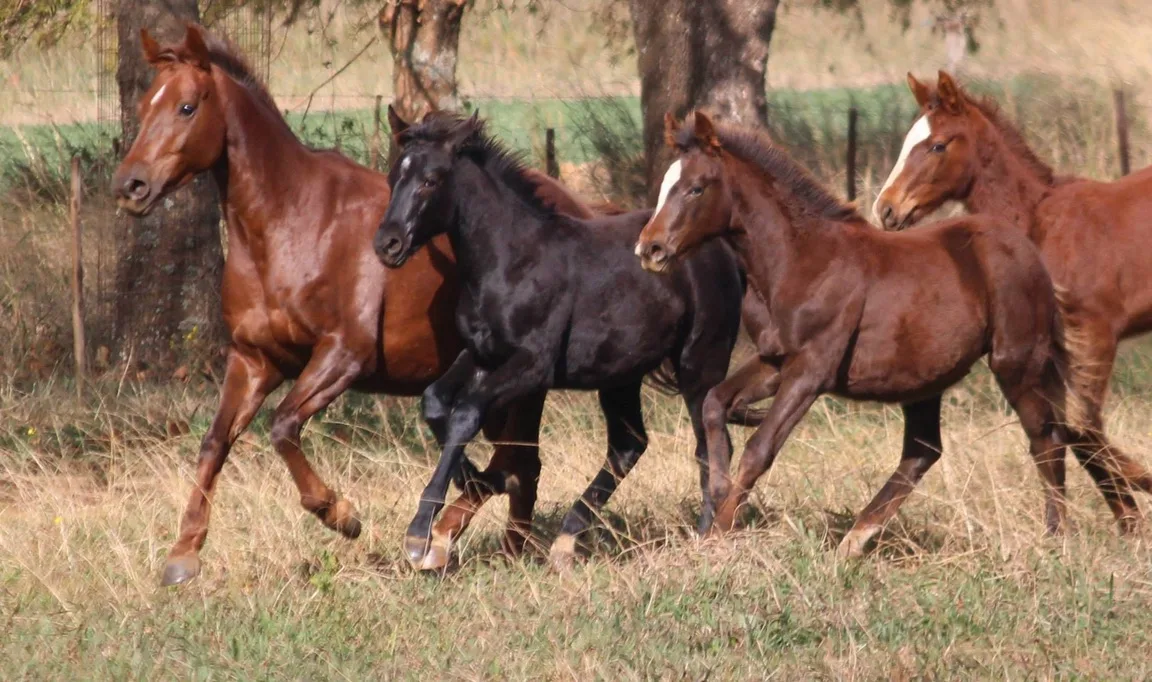
Timing and Techniques
Ideal Weaning Age
Determining the ideal weaning age is a critical decision that considers the physical and developmental needs of the foal. While weaning typically occurs between four to six months of age, the exact timing may vary based on individual circumstances. Some foals may exhibit signs of readiness for weaning earlier, while others may benefit from a more extended period of nursing.
Factors influencing the ideal weaning age include the foal’s overall health, growth rate, and nutritional requirements. Observing the foal’s ability to consume solid food, as well as its level of independence and social interactions, aids in identifying the optimal time for weaning. Consulting with a veterinarian can provide valuable insights into the individual needs of the foal, guiding horse owners in making informed decisions about the timing of this crucial transition.
Gradual vs. Abrupt Weaning
The choice between gradual and abrupt weaning methods depends on various factors, including the temperament of the mare, the foal’s behavior, and the preferences of the horse owner. Each approach has its advantages and challenges, and selecting the most suitable method requires careful consideration of the specific circumstances.
- Gradual Weaning: Gradual weaning involves a phased approach, allowing the foal to adapt slowly to the separation from its mother. This method may include short periods of separation, gradually increasing in duration, before the final and complete separation. Gradual weaning aims to reduce stress and anxiety associated with abrupt separation, giving the foal time to adjust to its new environment and dietary changes.
- Abrupt Weaning: Abrupt weaning involves an immediate and complete separation of the foal from the mare. While this method results in a quicker transition, it can be more stressful for both the foal and the mare. Abrupt weaning may be appropriate in certain situations, such as when health concerns necessitate rapid separation or when the mare displays aggressive behavior towards the foal.
Implementing Effective Separation Strategies
Regardless of the chosen weaning method, implementing effective separation strategies is crucial for minimizing stress and promoting a smooth transition. Key considerations include:
- Providing a Supportive Environment: Creating a secure and comfortable environment for the foal during and after separation is essential. Adequate shelter, access to clean water, and a well-balanced diet contribute to the foal’s overall well-being.
- Companion Animals: Introducing companion animals, such as other foals or calm, older horses, can alleviate feelings of isolation and provide emotional support during the weaning process.
- Monitoring Behavior: Regularly observing the foal’s behavior and reactions to separation helps identify signs of stress or anxiety. Prompt intervention and adjustment of strategies can address challenges and ensure the foal’s psychological well-being.
- Gradual Reintroduction: In gradual weaning scenarios, allowing the foal and mare to have supervised reunions after initial separation periods can help ease the emotional transition. This gradual reintroduction facilitates a positive association with the separation process.
Ultimately, the choice of timing and technique in the weaning process should be tailored to the unique needs of each foal and mare, taking into account both physical and psychological considerations. A thoughtful and well-planned approach contributes to a successful weaning experience, fostering the health and independence of the foal.
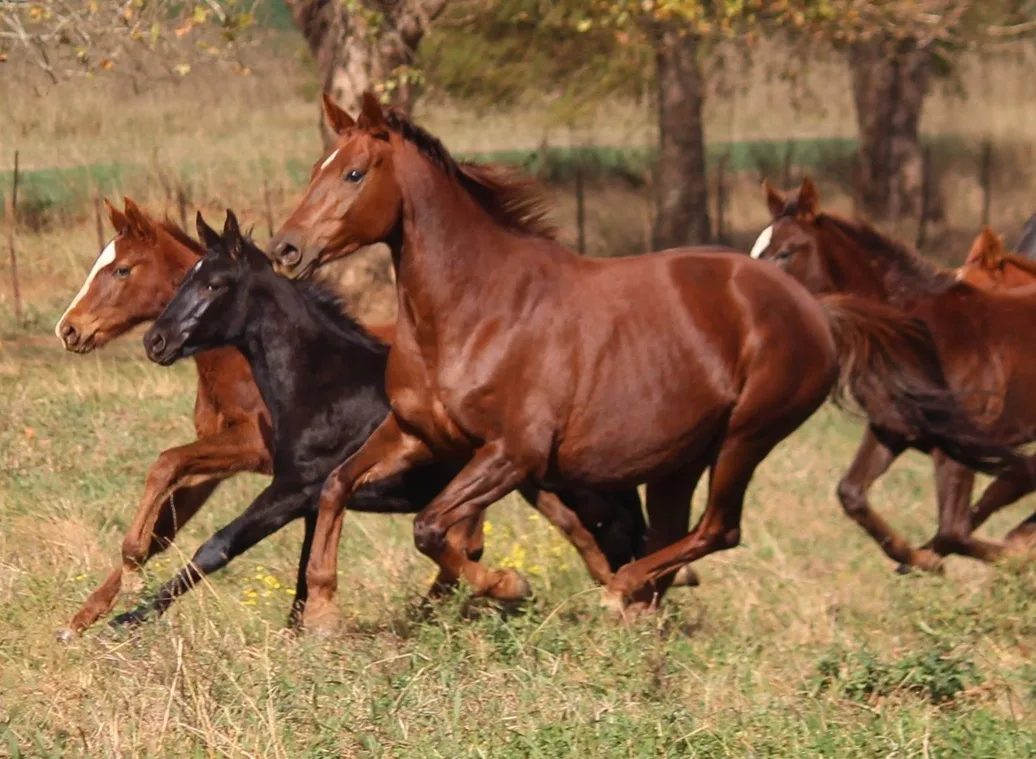
Dietary Adjustments
Transitioning from Mare’s Milk to Solid Feed
The transition from mare’s milk to solid feed is a crucial aspect of the weaning process, marking a significant shift in the foal’s nutritional intake. The following considerations can help facilitate a smooth transition:
- Introduction of Solid Feed: Gradually introducing foals to solid feed is essential. Begin by offering small amounts of high-quality foal concentrate designed to meet the nutritional needs of growing horses. Mixing the concentrate with a small amount of water can create a mash, making it more palatable and easing the transition.
- Weaning Pellets or Creep Feed: Providing foals access to weaning pellets or creep feed before complete separation allows them to familiarize themselves with solid food. Placing these feeds in a designated area that only foals can access (creep feeding) encourages them to explore and start consuming solid feed at their own pace.
- Observation and Adjustments: Regularly observe foals during the transition phase. Monitor their acceptance of solid feed, ensuring they are eating and adapting well. If any issues arise, adjustments to the type or texture of feed may be necessary. Additionally, consider the nutritional composition of the feed to meet the specific needs of growing foals.
Ensuring a Balanced Diet for Growing Foals
- Essential Nutrients: Growing foals require a balanced diet rich in essential nutrients for proper development. Key nutrients include high-quality protein, vitamins, and minerals. Ensuring an adequate intake of calcium and phosphorus is particularly crucial for bone development.
- Forage and Roughage: Alongside concentrates, incorporating forage such as good-quality hay into the diet is essential for digestive health. Forage provides fiber, promoting proper gut function and preventing issues like colic. Access to pasture, when appropriate, allows foals to graze and experience a natural feeding behavior.
- Hydration: Adequate hydration is fundamental for foal health. Monitoring water intake is crucial, especially during dietary transitions. Clean and easily accessible water sources should be provided to encourage regular drinking.
- Feeding Frequency: Foals have smaller stomach capacities, and frequent, smaller meals better mimic their natural feeding patterns. Dividing daily feedings into multiple smaller meals ensures that foals receive a consistent and balanced nutrient supply.
Nutritional Supplements and Considerations
- Consulting with a Veterinarian: Before introducing any nutritional supplements, it is advisable to consult with a veterinarian or equine nutritionist. They can assess the specific needs of individual foals and provide guidance on appropriate supplements.
- Vitamin and Mineral Supplements: Depending on the forage and concentrate composition, supplementation of certain vitamins and minerals may be necessary. Common supplements include those containing vitamin E, selenium, and essential minerals like zinc and copper.
- Joint Supplements: In some cases, joint supplements containing ingredients such as glucosamine and chondroitin sulfate may be recommended, especially for foals engaged in athletic activities. These supplements support joint health and flexibility.
- Growth and Development Considerations: Nutritional needs vary based on the foal’s breed, growth rate, and intended use. Foals with rapid growth rates, such as those from larger breeds, may have different nutritional requirements than smaller or slower-growing foals.
By carefully managing dietary adjustments during the weaning process, horse owners can support the healthy growth and development of foals, ensuring they receive the essential nutrients needed for a successful transition to independence. Regular consultation with a veterinarian or equine nutritionist is key to tailoring a diet that meets the specific needs of each foal.
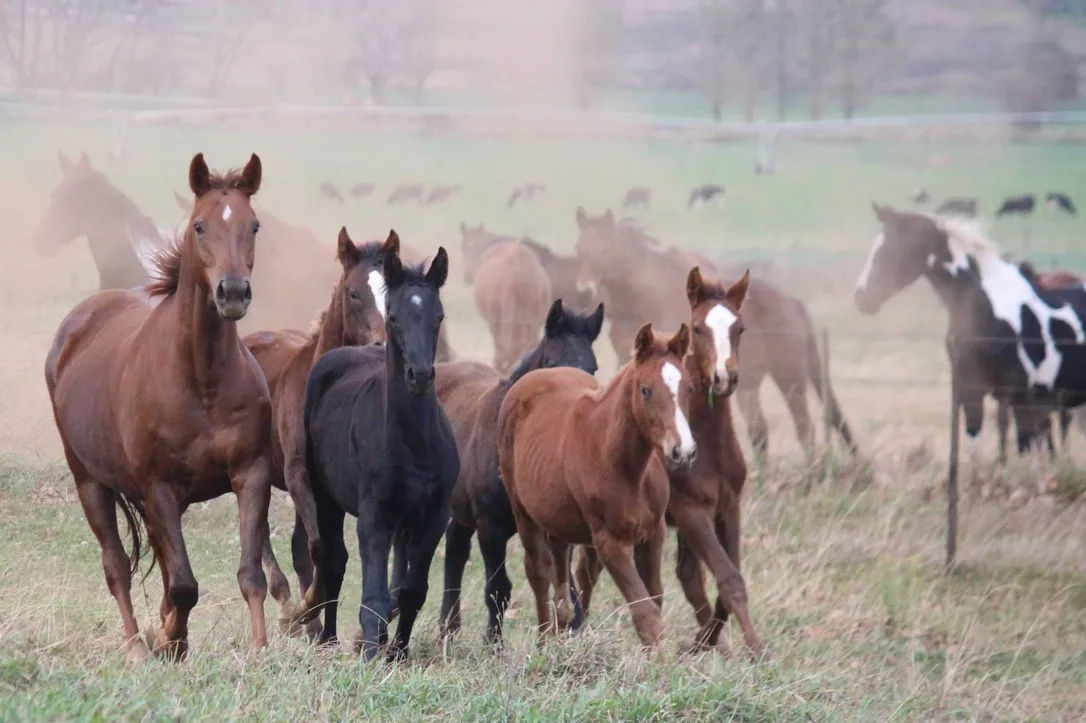
Importance of Socializing with Other Foals
- Natural Instincts: Foals are naturally social animals, and their socialization with other foals plays a crucial role in their overall development. In the wild, young horses interact with their peers, learning important social cues and behaviors that contribute to their well-being.
- Communication Skills: Interacting with other foals allows for the development of essential communication skills. Foals engage in play, grooming, and mutual exploration, which helps them understand social boundaries, establish friendships, and develop the ability to interpret and respond to various social signals.
- Behavioral Benefits: Foals that engage in healthy social interactions often exhibit more balanced behavior as they grow older. Socialization provides an outlet for excess energy, reduces boredom, and contributes to the overall mental and emotional well-being of the foal.
Group Dynamics and Hierarchy
- Establishment of Hierarchy: Foals naturally establish a social hierarchy within their group. This hierarchy is often established through play, interactions, and subtle dominance displays. Understanding and respecting the hierarchy is crucial for maintaining harmony within the group.
- Learning Social Skills: Through interactions within a group, foals learn valuable social skills that extend beyond their immediate peers. They gain experience in navigating social situations, resolving conflicts, and cooperating within a larger community.
- Role of Older Horses: Including older, more experienced horses in the group can be beneficial for foals. Older horses often provide guidance, discipline, and a sense of stability, contributing to the foals’ social education.
Providing a Supportive Environment for Social Growth
- Adequate Space and Facilities: Providing enough space for foals to move, play, and interact is essential for their social development. Adequate pasture and well-designed facilities contribute to a positive social environment.
- Age-Appropriate Pairings: When introducing foals to group settings, considering their ages and temperaments is important. Mixing foals of similar ages can reduce the risk of injuries and promote more harmonious social dynamics.
- Supervision and Intervention: Regular supervision of social interactions allows horse owners to monitor the dynamics within the group. Intervening when necessary, such as in cases of aggressive behavior or bullying, helps maintain a safe and supportive social environment.
- Gradual Introductions: If introducing a foal to a new social group, a gradual and supervised process is recommended. Allowing time for the foal to acclimate and form bonds with other members helps reduce stress and promotes positive social interactions.
- Ensuring Adequate Resources: Providing sufficient resources, such as food, water, and shelter, prevents competition and minimizes potential conflicts within the group. Ensuring equitable access to resources contributes to a positive social atmosphere.
- Human Interaction: While socializing with peers is crucial, human interaction remains an essential component of a foal’s social development. Regular handling, grooming, and positive interactions with humans contribute to a well-rounded socialization experience.
By recognizing the importance of socialization, understanding group dynamics, and creating a supportive environment, horse owners can foster the social development of foals. A well-socialized foal is more likely to grow into a confident, well-adjusted adult horse capable of positive interactions with both peers and humans.
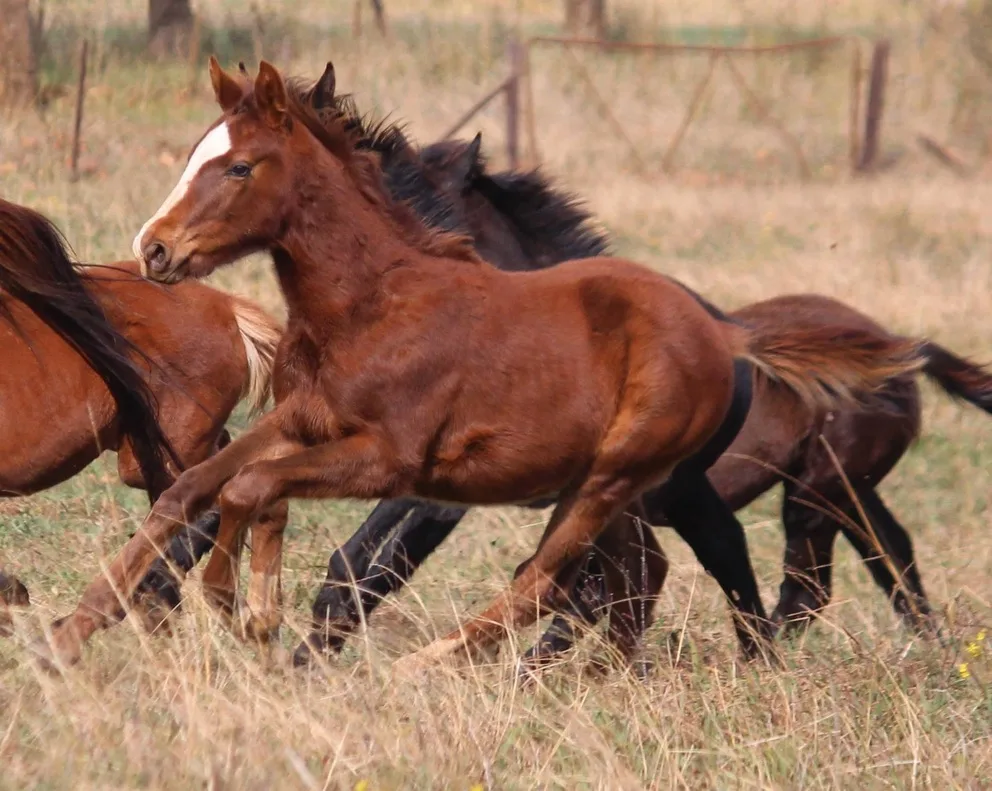
Monitoring and Intervention
Regular Health Check-ups
- Importance of Regular Check-ups: Regular health check-ups are essential during the weaning process to monitor the overall well-being of foals. These check-ups, conducted by a veterinarian, help identify any potential health issues early on, allowing for timely intervention and prevention of more serious complications.
- Vaccinations and Deworming: Part of routine health check-ups includes ensuring that foals are up-to-date on vaccinations and deworming protocols. Vaccinations protect against common diseases, while deworming helps prevent parasitic infections that can negatively impact a foal’s health and growth.
- Assessment of Growth and Development: Monitoring the foal’s growth, weight, and overall development is crucial. Regular measurements and assessments provide valuable information about the effectiveness of the diet, ensuring that the foal is receiving the necessary nutrients for proper growth.
Recognizing Signs of Distress or Health Issues
- Behavioral Changes: Changes in behavior can be indicative of distress or underlying health issues. Signs such as lethargy, increased aggressiveness, or withdrawal from social interactions may warrant closer observation.
- Digestive Issues: Foals are susceptible to digestive problems, including colic and diarrhea. Monitoring fecal consistency, appetite, and any signs of abdominal discomfort can help detect digestive issues early on.
- Respiratory Symptoms: Respiratory issues, such as coughing or nasal discharge, should be promptly addressed. Foals can be susceptible to respiratory infections, and early intervention helps prevent the spread of illness within a group.
- Lameness or Gait Abnormalities: Observing the foal’s gait and movement is crucial. Lameness or gait abnormalities may signal musculoskeletal issues or injuries that require attention.
Interventions to Address Challenges
- Consultation with Veterinarian: When signs of distress or health issues are observed, seeking immediate veterinary advice is crucial. A veterinarian can conduct a thorough examination, perform diagnostic tests if necessary, and recommend appropriate interventions.
- Adjustment of Diet: If growth or nutritional issues are identified, the veterinarian may recommend adjustments to the foal’s diet. This could involve modifying the type or quantity of feed, introducing supplements, or addressing any specific nutritional deficiencies.
- Isolation and Quarantine: In cases where contagious diseases are suspected, isolating the affected foal from the group and implementing quarantine measures can prevent the spread of illness. This is crucial for maintaining the health of the entire herd.
- Pain Management: If lameness or musculoskeletal issues are identified, the veterinarian may recommend pain management strategies, such as anti-inflammatory medications or supportive care to alleviate discomfort.
- Behavioral Interventions: Behavioral issues, such as excessive stress or aggression, may require interventions to create a more conducive environment. This could involve changes in social groupings, providing additional enrichment, or implementing stress-reducing measures.
- Monitoring and Follow-up: After interventions are implemented, ongoing monitoring and follow-up are essential. This ensures that the chosen interventions are effective and that the foal is recovering as expected. Adjustments can be made if needed based on the foal’s response to treatment.
Regular communication with the veterinarian, combined with vigilant observation, allows horse owners to address challenges promptly and ensure the overall health and well-being of foals during the weaning process. Early intervention is key to preventing complications and promoting a successful transition to independent and thriving individuals.
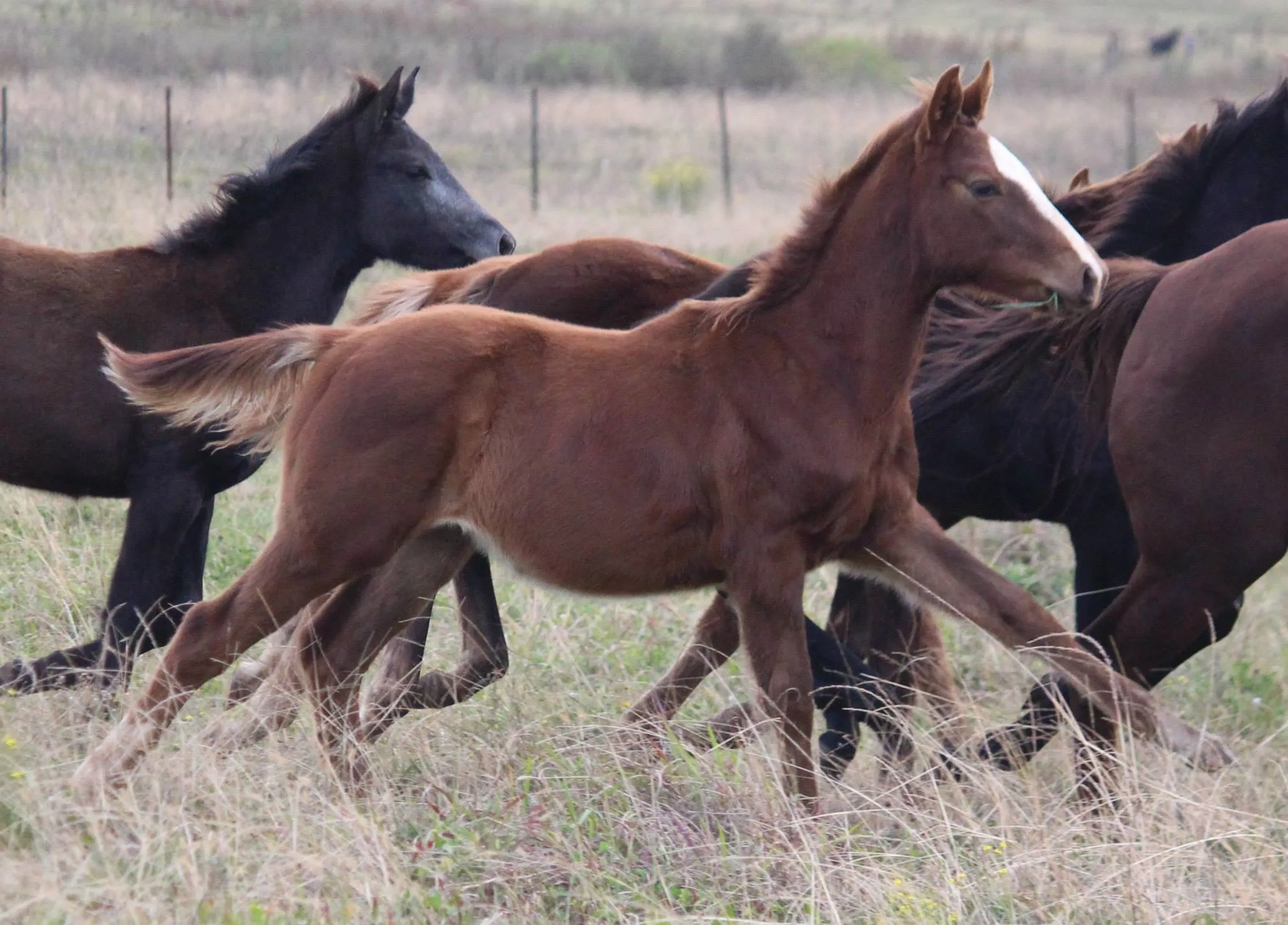
Case Studies
Real-life Examples of Successful Foal Weaning
- Case Study 1:
- Gradual Weaning Success
- Scenario: A breeder opted for a gradual weaning approach with a group of foals, allowing them to spend short, supervised periods away from their dams before the final separation.
- Outcome: Foals exhibited minimal stress during the weaning process, adjusting well to the new feeding routine. The gradual separation strategy helped foster independence and minimized behavioral issues. Regular social interactions with other foals facilitated a smooth transition, and the foals continued to thrive both socially and physically.
- Gradual Weaning Success
- Case Study 2:
- Nutritional Adjustments
- Scenario: A foal displayed signs of slow growth and reluctance to transition to solid feed after an abrupt weaning process.
- Outcome: A veterinarian recommended adjustments to the foal’s diet, including the introduction of a high-quality foal concentrate and supplementing with vitamins and minerals. Within a few weeks, the foal’s weight increased, and it began to consume solid feed more readily. Regular health check-ups ensured ongoing monitoring of the foal’s progress, highlighting the importance of nutritional customization for individual needs.
- Nutritional Adjustments
Challenges Faced and Overcome
- Case Study 3:
- Separation Anxiety
- Challenge: A foal exhibited severe separation anxiety after abrupt weaning, displaying signs of distress and reduced appetite.
- Resolution: The owner implemented behavioral interventions, gradually reintroducing the foal to the dam for short periods to alleviate stress. Additionally, the introduction of a calm companion horse provided emotional support. Over time, the foal adjusted to independence, emphasizing the importance of addressing emotional well-being during weaning.
- Separation Anxiety
- Case Study 4:
- Respiratory Issues
- Challenge: A group of foals experienced a respiratory infection following the weaning process, leading to coughing and nasal discharge.
- Resolution: Immediate veterinary intervention included respiratory treatments and antibiotics. Isolation of the affected foals prevented further spread of the infection. Regular cleaning of the stable environment and proper ventilation contributed to the recovery of the foals. The case underscored the significance of biosecurity measures in preventing and managing contagious diseases.
- Respiratory Issues
Lessons Learned from Various Scenarios
- Lesson 1:
- Individualized Approaches
- Insight: Each foal is unique, and there is no one-size-fits-all approach to weaning. Case studies emphasize the importance of tailoring strategies to individual needs, considering factors such as temperament, growth rate, and health status.
- Individualized Approaches
- Lesson 2:
- Balancing Nutrition and Emotional Well-being
- Insight: Successful weaning involves a delicate balance between meeting nutritional needs and addressing emotional well-being. Gradual weaning, proper diet management, and attention to social interactions contribute to a holistic approach that supports the foal’s overall health.
- Balancing Nutrition and Emotional Well-being
- Lesson 3:
- Early Intervention and Regular Monitoring
- Insight: Prompt recognition of challenges and early intervention significantly contribute to successful outcomes. Regular health check-ups, close observation of behavior, and adjustments based on ongoing assessments are essential components of effective foal management during the weaning process.
- Early Intervention and Regular Monitoring
- Lesson 4:
- Importance of Professional Guidance
- Insight: Consulting with veterinarians and equine professionals is invaluable. Their expertise helps horse owners make informed decisions, whether it involves dietary adjustments, behavioral strategies, or medical interventions.
- Importance of Professional Guidance
In summary, case studies provide valuable insights into the diverse experiences of foal weaning. They underscore the importance of flexibility, individualized care, and the integration of both physical and emotional considerations in achieving successful outcomes. Learning from real-life scenarios helps horse owners refine their approach to weaning, contributing to the well-being and development of foals.
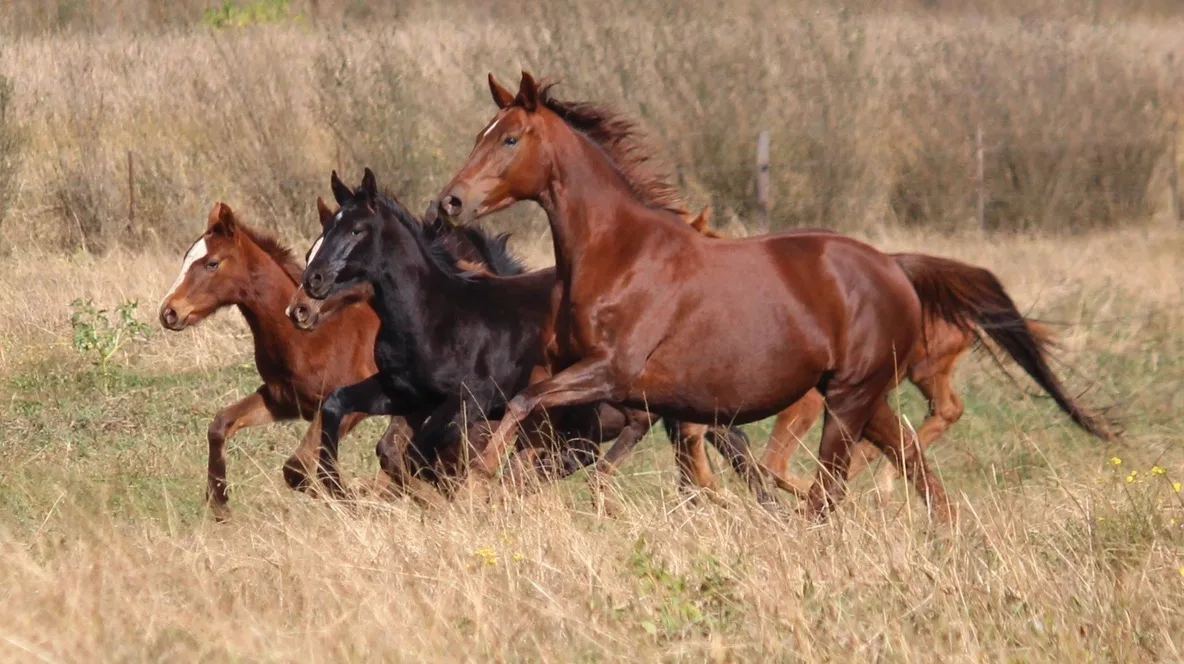
Tips for Owners
Creating a Supportive Environment
- Comfortable Living Spaces:
- Tip: Ensure that foals have access to clean and comfortable living spaces. Well-ventilated stables or sheltered areas with adequate bedding contribute to a stress-free environment during the weaning process.
- Social Interaction Areas:
- Tip: Designate areas for social interaction between foals. Providing spaces where they can play, groom each other, and establish social bonds contributes to a positive and supportive atmosphere.
- Secure Fencing:
- Tip: Ensure that fencing is secure and suitable for foals to prevent injuries and escapes. A safe environment fosters a sense of security, minimizing stress during the weaning period.
- Environmental Enrichment:
- Tip: Incorporate environmental enrichment to prevent boredom. Items such as toys, hanging feeders, and safe obstacles stimulate foals both mentally and physically, promoting a healthy and engaged environment.
Being Attentive to Individual Foal Needs
- Observation and Monitoring:
- Tip: Regularly observe foals for signs of distress, changes in behavior, or health issues. Monitoring their interactions, eating habits, and overall well-being allows for early detection of potential challenges.
- Customized Nutrition Plans:
- Tip: Recognize that each foal may have unique nutritional requirements. Work with a veterinarian or equine nutritionist to create customized diet plans based on individual needs, growth rates, and any specific health considerations.
- Personalized Socialization:
- Tip: Be attentive to individual socialization needs. While some foals may thrive in larger groups, others may prefer smaller interactions. Observing their interactions and adjusting social settings accordingly ensures a positive experience.
- Flexibility in Weaning Strategies:
- Tip: Acknowledge that weaning strategies may need to be flexible. If a foal shows signs of stress during a gradual separation, be open to adjusting the plan to better suit the individual’s needs.
Seeking Professional Advice When Necessary
- Veterinary Consultation:
- Tip: Seek regular veterinary consultations during the weaning process. Veterinarians can provide valuable guidance on health, diet, and behavior, ensuring a comprehensive approach to the foal’s well-being.
- Equine Nutritionist Expertise:
- Tip: Consult with equine nutritionists to design optimal feeding plans. These professionals can tailor diets to meet individual foal requirements, addressing specific nutritional needs for growth and development.
- Behavioral Specialist Input:
- Tip: If behavioral issues arise during weaning, consider seeking advice from equine behavior specialists. Their expertise can help address challenges such as separation anxiety or aggression, ensuring a positive social development for the foal.
- Networking with Experienced Breeders:
- Tip: Network with experienced breeders who have successfully navigated the weaning process. Sharing experiences and learning from others in the equine community provides valuable insights and support.
By implementing these tips, horse owners can create a nurturing environment, attend to individual foal needs, and seek professional advice when necessary. The combination of a well-designed living space, personalized care, and collaboration with equine professionals contributes to a positive and successful foal weaning experience.
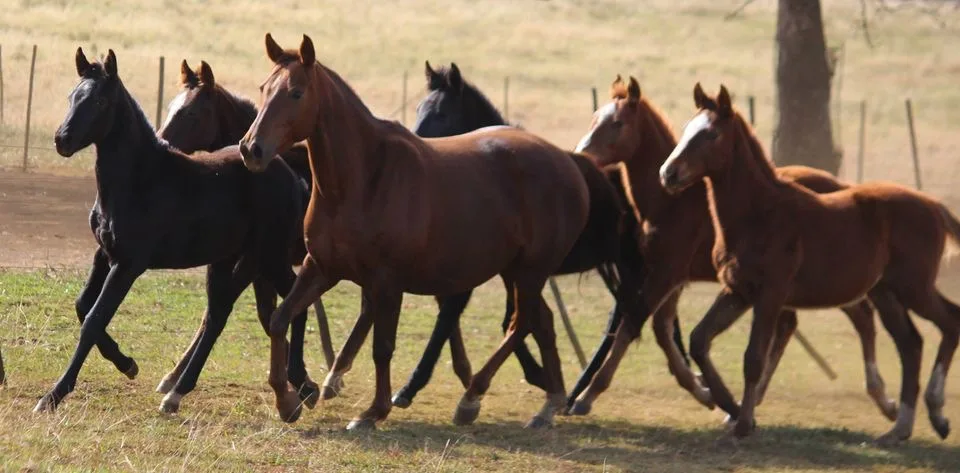
Conclusion
Recap of Key Considerations
In navigating the intricate process of foal weaning, several key considerations emerge as crucial for ensuring the health and well-being of the young horse. These considerations include:
- Nutritional Management: Properly managing the transition from mare’s milk to solid feed is essential. Tailoring the foal’s diet to meet its individual nutritional needs promotes healthy growth and development.
- Socialization: Recognizing the importance of social interactions, both with their dams and peers, is vital. Foals benefit from gradual exposure to group dynamics, fostering essential communication and behavioral skills.
- Health Monitoring: Regular health check-ups, vigilant observation, and prompt recognition of signs of distress or illness are paramount. Early intervention can prevent the escalation of health issues and contribute to overall foal well-being.
- Balanced Weaning Strategies: Choosing appropriate weaning strategies, whether gradual or abrupt, requires careful consideration of individual foal temperaments, maternal dynamics, and overall herd management.
Emphasizing the Importance of a Balanced Approach
A balanced approach to foal weaning encompasses a holistic understanding of the foal’s needs—both physical and emotional. Striking a balance between meeting nutritional requirements and addressing the foal’s psychological well-being is fundamental. By recognizing the interplay between these factors, horse owners can navigate the weaning process with empathy and foresight.
Balanced weaning involves thoughtful dietary adjustments, gradual socialization, and a keen awareness of the individual needs of each foal. It recognizes that there is no one-size-fits-all solution, emphasizing the importance of flexibility and adaptability in the management of foals during this critical developmental stage.
Ensuring a Healthy and Harmonious Transition for Foals
The ultimate goal of foal weaning is to facilitate a healthy and harmonious transition from dependency to independence. This process is not without its challenges, but by adhering to best practices, learning from real-life scenarios, and seeking professional guidance when needed, horse owners can ensure a positive experience for foals.
A harmonious transition involves fostering physical health through appropriate nutrition, promoting emotional well-being through socialization, and addressing challenges promptly and effectively. By creating a supportive environment, being attuned to individual foal needs, and collaborating with veterinarians and equine professionals, horse owners play a pivotal role in shaping the future health and behavior of their foals.
In conclusion, the success of foal weaning lies in the delicate balance of science and sensitivity. It is a journey that requires careful navigation, continuous learning, and a commitment to the holistic well-being of these young equine companions. With dedication and informed care, horse owners can ensure that foals embark on a path to independence with health, confidence, and resilience
Further reading
Weaning Your Foal
American Association of Equine Practitioners
Weaning is usually done somewhere between 4 and 7 months of age, although some ranches leave their foals on the mares a bit longer. After 4 months of age, the …
Low-Stress Foal Weaning
If, for practical reasons, you must reunite mother and foal in the same pasture, wait at least four months. By then, most mares will stop producing milk. “Even …
Weaning Foals – How & When to Wean Young Horse
The weaning process is complete when the foal is completely independent from its mother, even though they will maintain tight social bonds if they are kept …
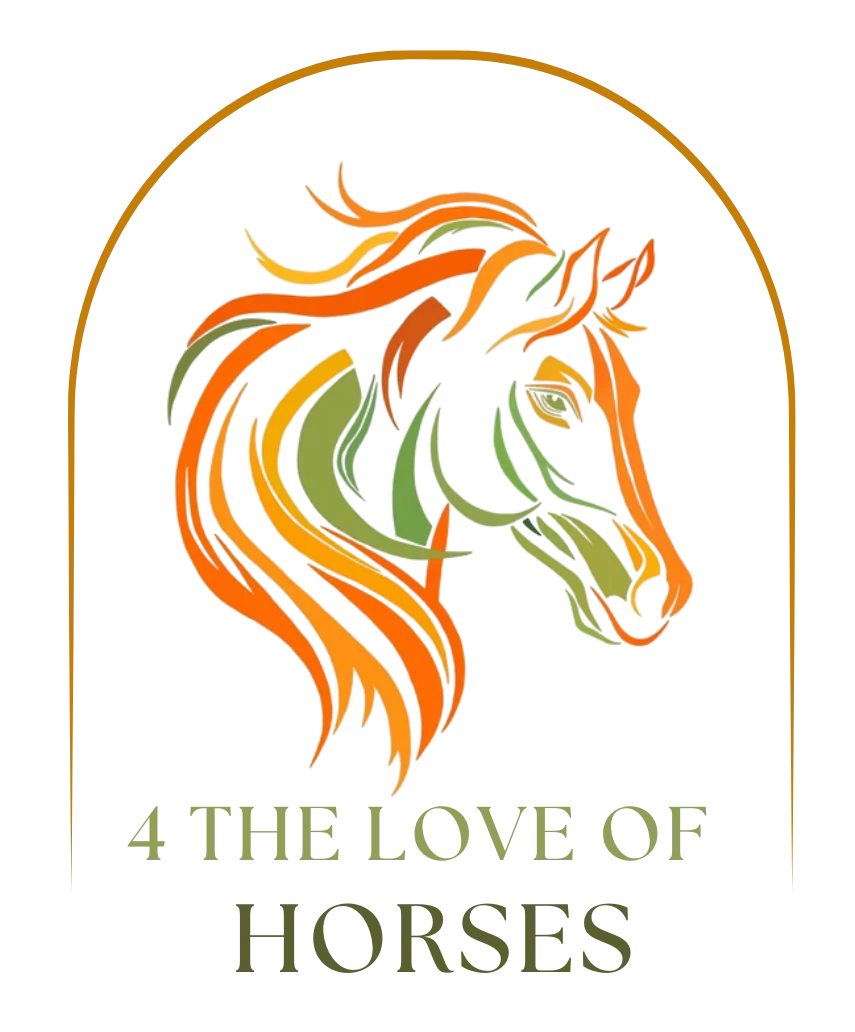
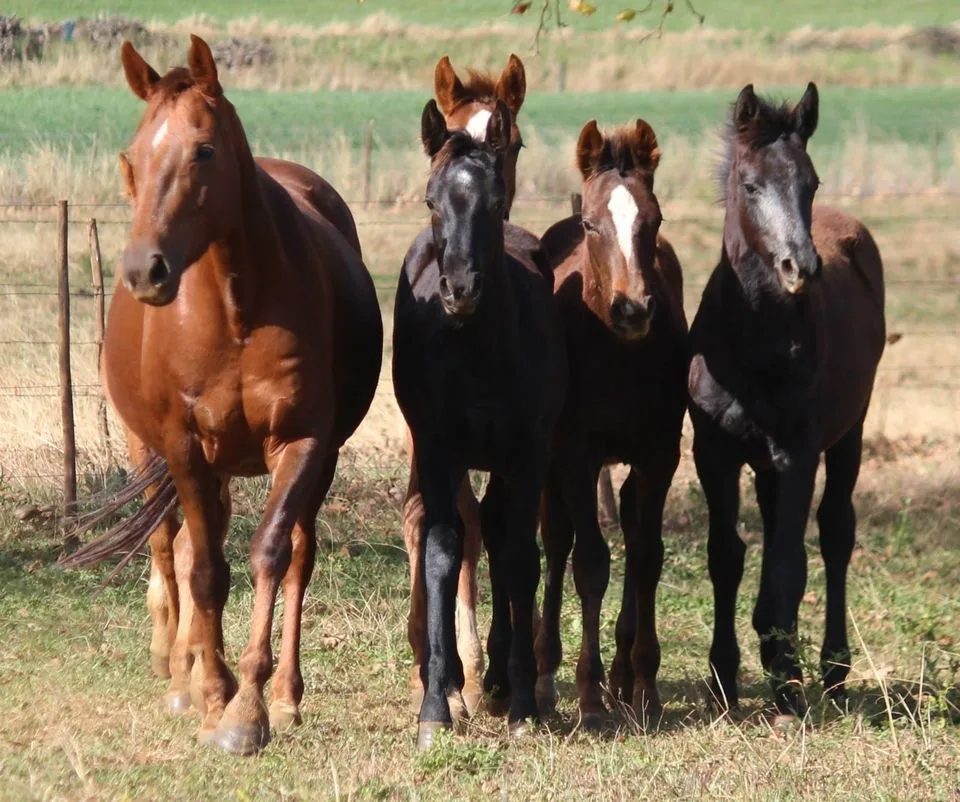
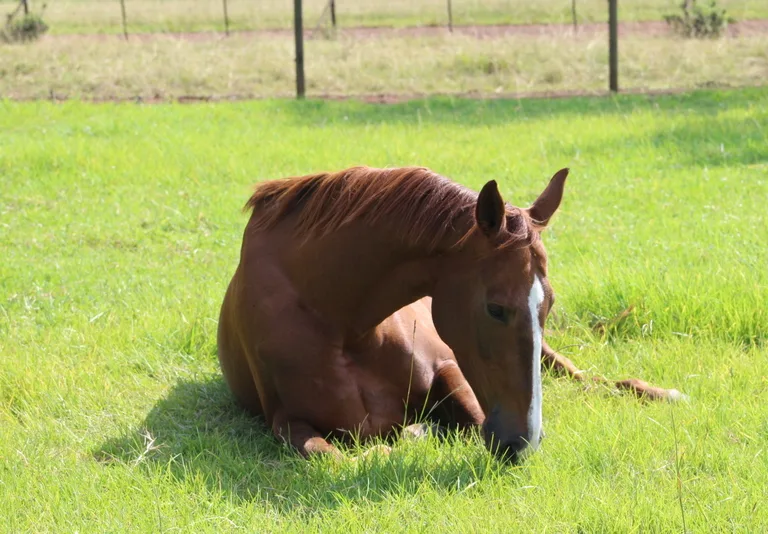

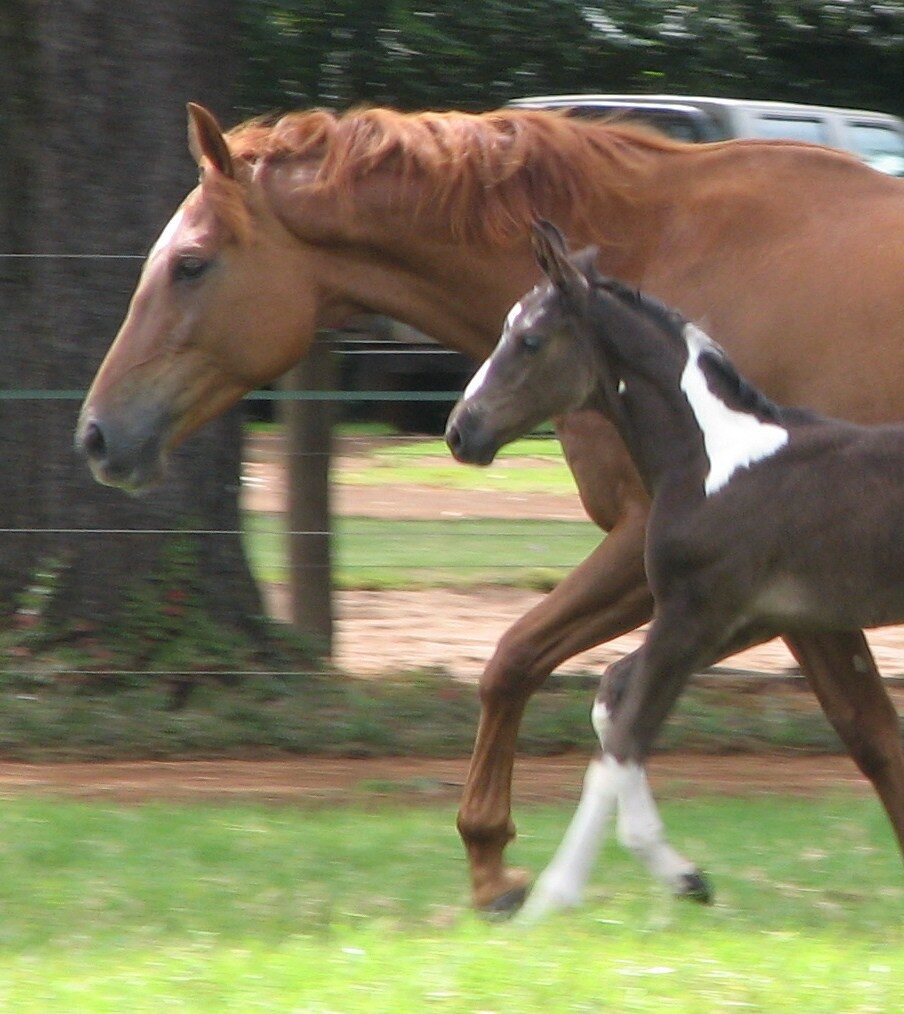
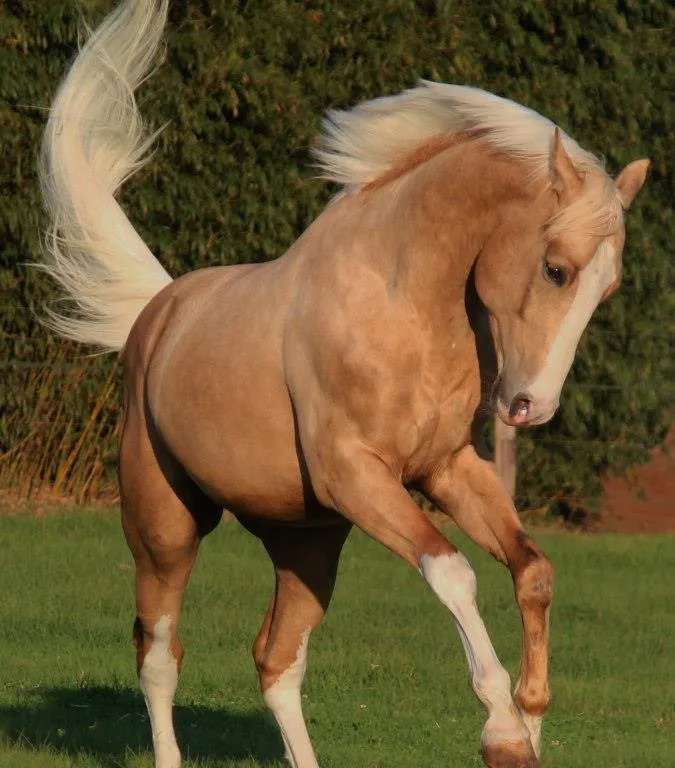

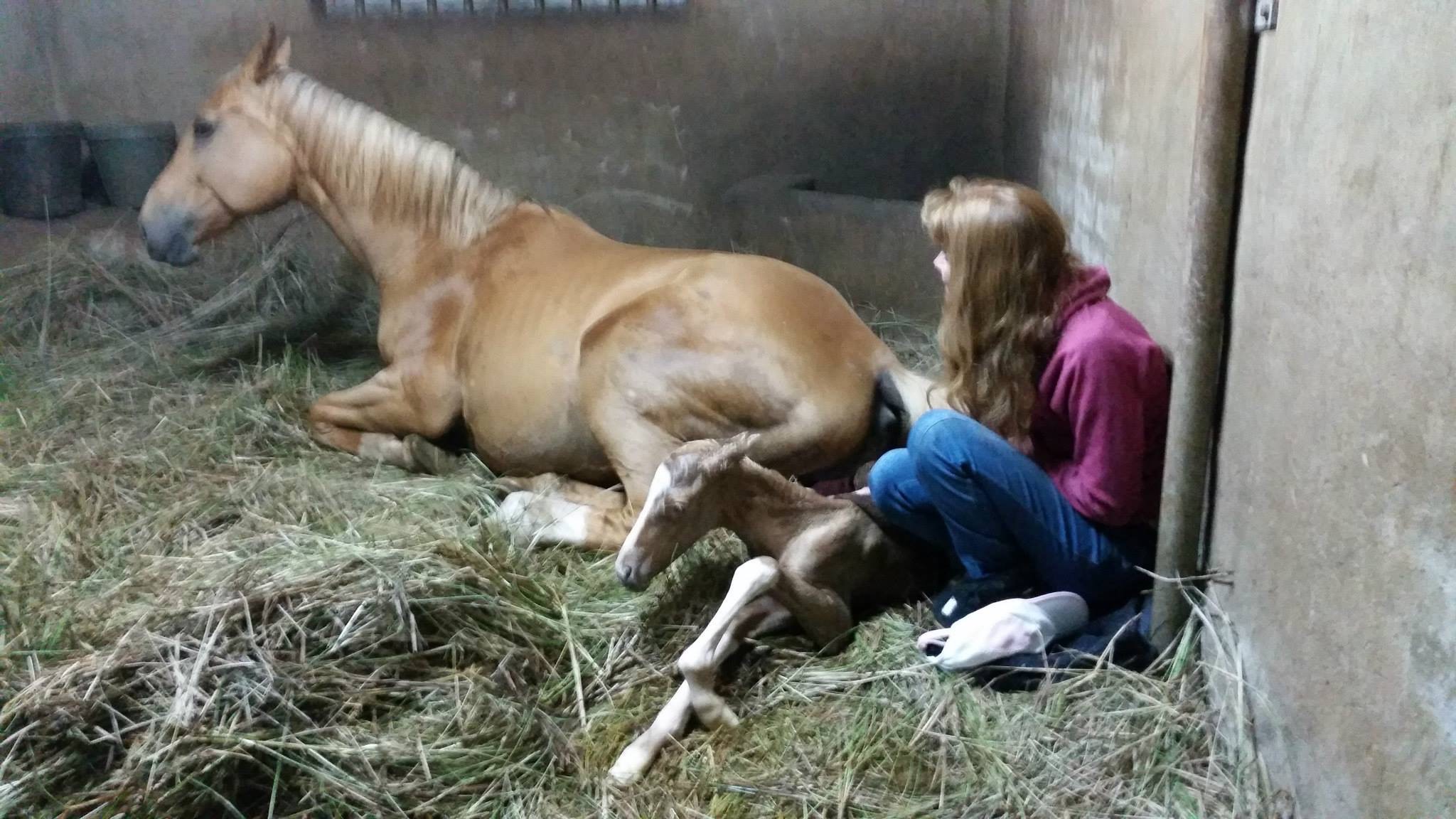
Social Development